Technics EAH-AZ80 review: grown-up and thoroughly convincing in-ears
Technics' top-end true wireless in-ears bring a first to the market and are largely impressive earbuds overall


The Technics EAH-AZ80 have some real areas of expertise, not least where connectivity, comfort and communication are concerned. They’re a convincingly life-like and uncoloured listen, too. But that quite doesn’t mean they’re the complete package…
-
+
Balanced, detailed and naturalistic sound
-
+
Triple-point wireless connectivity and good comms abilities
-
+
Very comfortable ergonomic design
-
-
Ordinary battery life
-
-
Ordinary noise-cancellation
-
-
Not the most energetic listen around
Why you can trust T3

Here’s an introduction about how the Technics brand needs no introduction. Almost every other audio electronics brand would quite possibly kill to have just a fraction of the profile and resonance of Technics, not to mention a logo that’s as widely recognised. Even deeply credible rival firms have to acknowledge the emotional response many customers have to the ‘T’ word.
It takes more than this sort of respect and affection to make it in the cut-throat world of the best true wireless in-ear headphones, though. You’re spoiled for choice, and can take your pick from any number of high-achieving models. So what, with its new EAH-AZ80 model, is Technics offering (apart from reputation and kudos, I mean)?
Technics AZ80: Price & Availability
The Technics EAH-AZ80 true wireless in-ear headphones are on sale from today (May 18th), and in the United Kingdom they’re priced at £259. In the United States they go for $299, while Australian customers are looking at AU$499.
This is premium pricing, no two ways about it. So while the Technics brand has the cachet and credibility to go up against their best price-comparable alternatives, the EAH-AZ80 nevertheless need to be something special if they’re not just going to be another also-ran in the Great True Wireless Sweepstakes.
Technics AZ80 review: What's new?
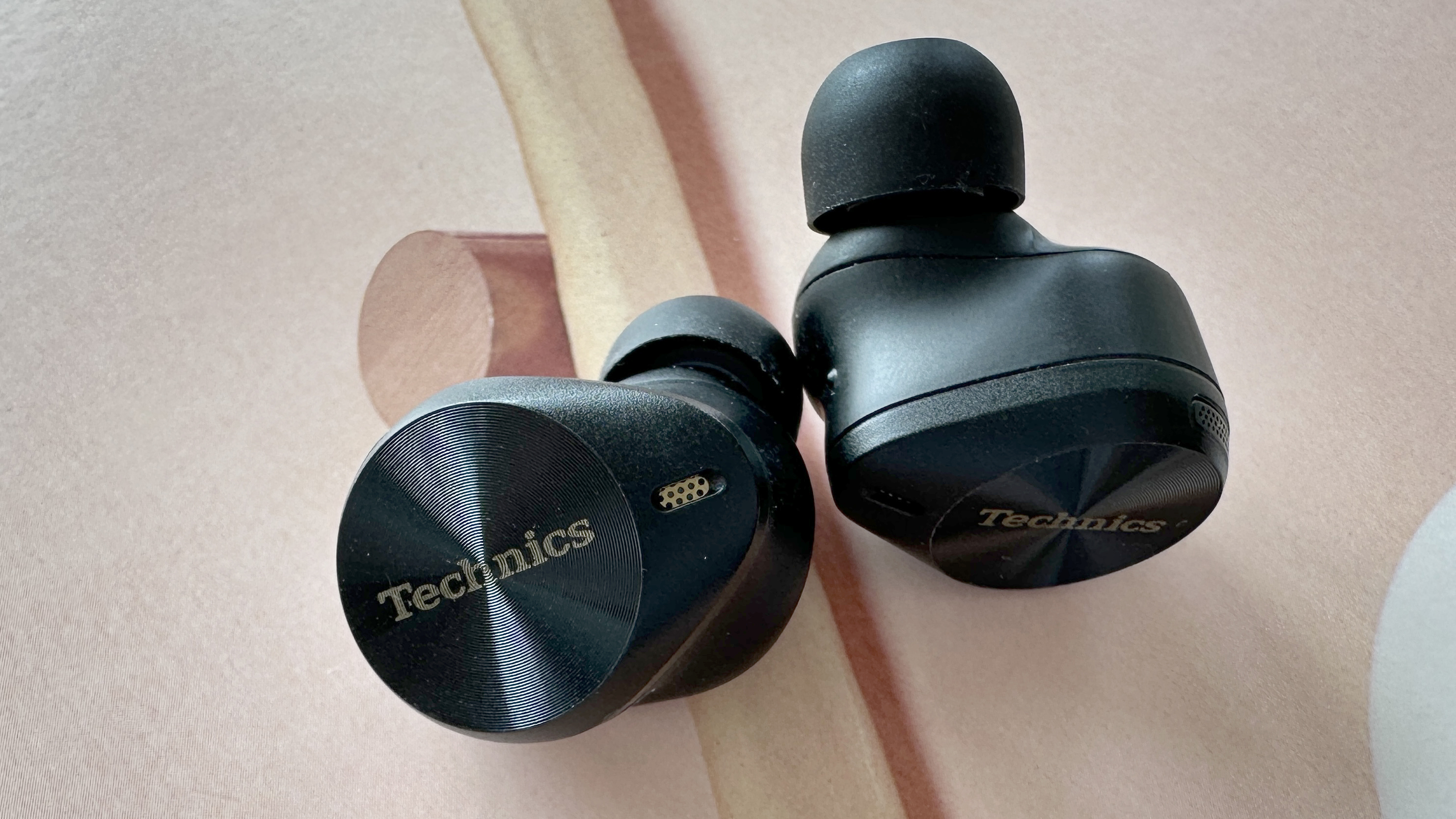
Where the features and specification of the EAH-AZ80 are concerned, Technics has not so much ‘gone to town’ as ‘gone to town, come home again to freshen up, and then gone back to town for a big night out’. These earbuds have, relatively speaking, plenty going on.
Wireless connectivity is taken care of via Bluetooth 5.3 (with SBC, AAC and LDAC codec compatibility). That’s already pretty decent, but the AZ80 are also the world’s first true wireless in-ear headphones with triple-point connectivity - which means those Captains of Industry among us can connect their AZ80 to a smartphone, laptop and tablet (for example) all at the same time, and switch smoothly, seamlessly and easily between them.
Once one of the three devices you’re connected to has streamed the digital audio information to the AZ80, the sound is delivered via a pair of 10mm full-range, free-edge aluminium dynamic drivers. They’re augmented by a carefully designed acoustic control chamber and harmoniser, and Technics is claiming a best-case-scenario frequency response of 20Hz-40kHz. Each earbud is IPX4-rated against moisture - so rain-splashes or humidity shouldn’t be an issue.
Get all the latest news, reviews, deals and buying guides on gorgeous tech, home and active products from the T3 experts
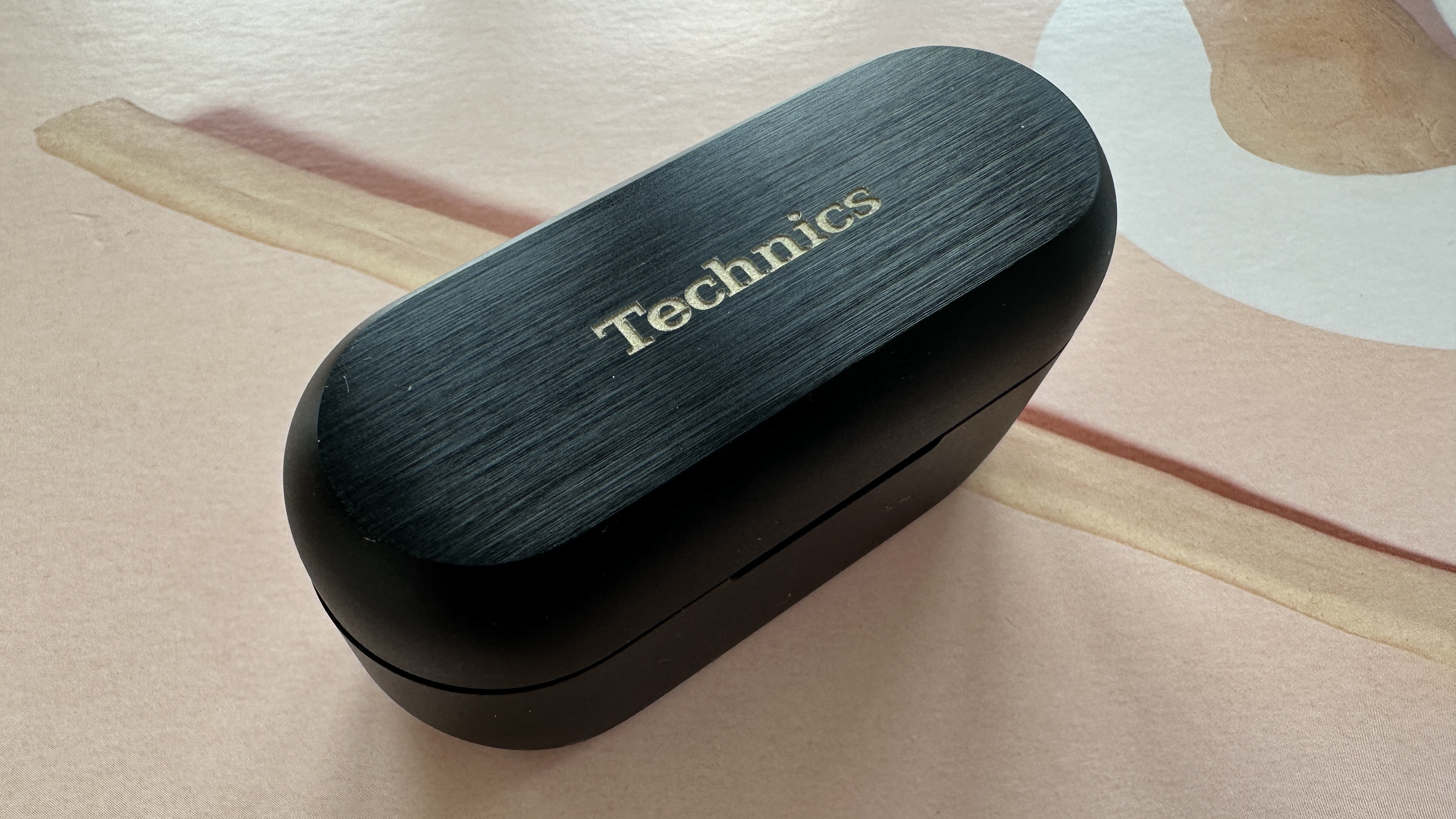
There are eight mics in total spread across the earbuds - each has a ‘talk’, ‘voice detection’, ‘feed forward’ and ‘feed back’ mic. Technics is putting a lot of emphasis on the ability of the AZ80 to function as a credible communication device - its ‘Just My Voice’ technology aims to maximise voice clarity in windy environments and suppress external sounds that can impact on intelligibility during calls. This mic array is also involved in the ‘dual hybrid’ active noise-cancellation (ANC) that’s on board - as well as ‘feed back’ and ‘feed forward’ noise-cancellation, the Technics have both a software filter (for digital processing) and a hardware filter (for the analogue equivalent).
The battery life that’s available is quite strongly affected by the sort of listening you’re doing though. Listen to a chunky LDAC stream with ANC switched on and you can expect around 4.5 hours from the earbuds (with another 16 hours or so in the charging case), but if you switch the ANC off and step down to AAC then those numbers become 7.5 hours from the ‘buds and around 25 hours from the case.
Charging from ‘flat’ to ‘full’ takes two hours or so, and a 15-minute burst should be sufficient for over an hour’s playback. The charging case has a USB-C slot for charging, and the AZ80 are compatible with Qi wireless chargers too.
Technics AZ80 review: Performance
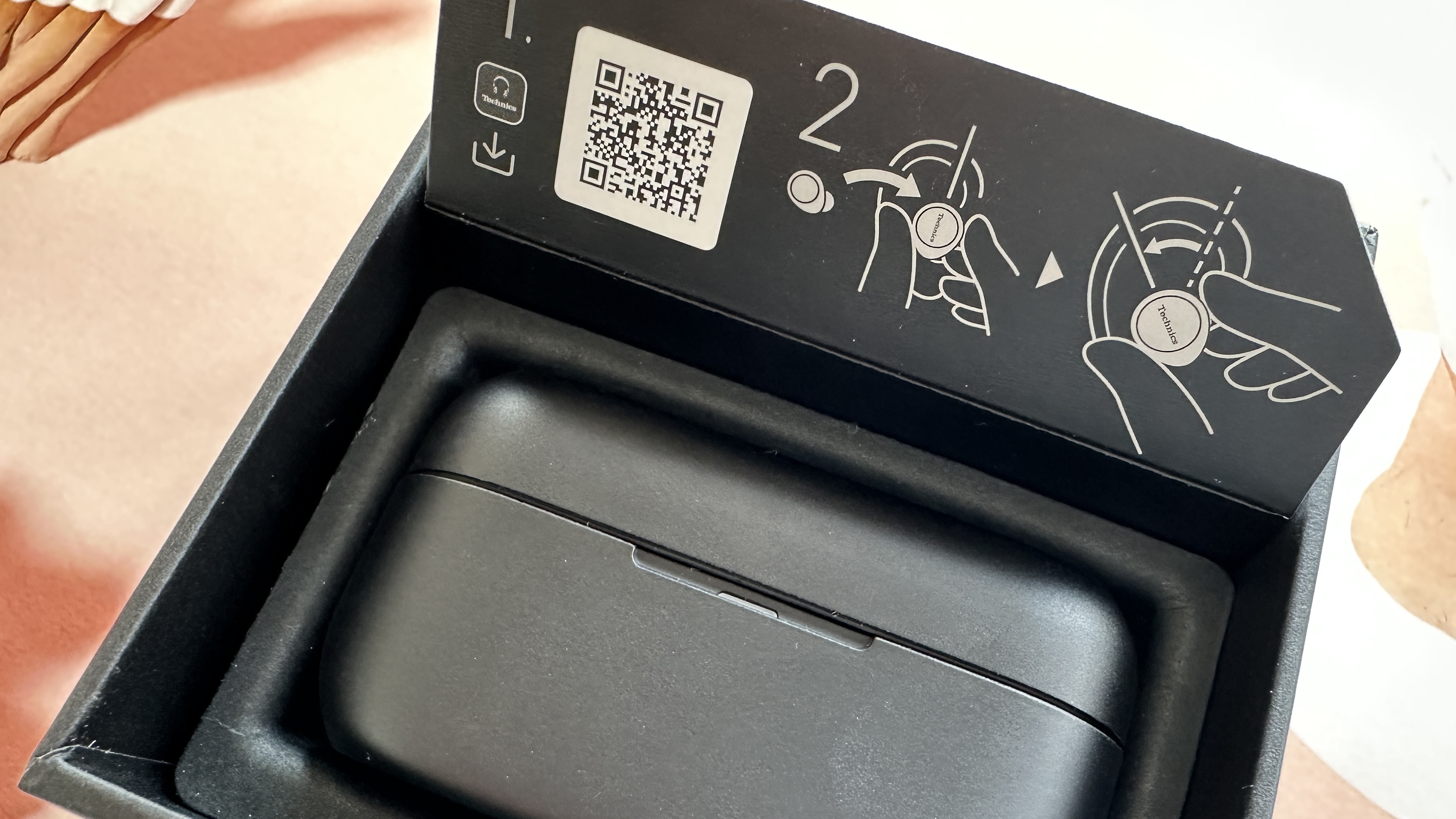
For once, it might be worth starting with the secondary aspects of the way the EAH-AZ80 perform. After all, this is - at the risk of labouring a point - a very competitive market, and your individual priorities will have a big say in whether or not these Technics are for you.
If you like the idea of the triple-point connectivity, be assured the AZ80 are unshakeable in their connection - so ultimate multi-tasking is no problem. If you’re here for the ‘communications’ part of the deal, I’m pleased to say the ‘Just My Voice’ technology works a treat - wind-noise is minimised, and voices are given far more prominence than is the norm. There’s a slightly artificial edge to the way the AZ80 handle voices, it’s true, but that’s got to be preferable to the roaring wind interference that can blight calls when using some other, similarly expensive, earbuds.
If ANC is near the top of your list of priorities, though, the AZ80 aren’t quite such a sure thing. They can do a job on external sounds, certainly, but it’s not the complete job that some of their best rivals (which inevitably means Bose - see the footnote of this article) can manage. A reduction in overall noise, and notably good work with higher-frequency distractions, is always welcome, of course - but there’s no two ways about it: the Technics are no better than ‘ordinary’ where this sort of thing is concerned. At least the amplified sounds of the outside world audible when using the ‘ambient sound’ setting are crisp and uncoloured.
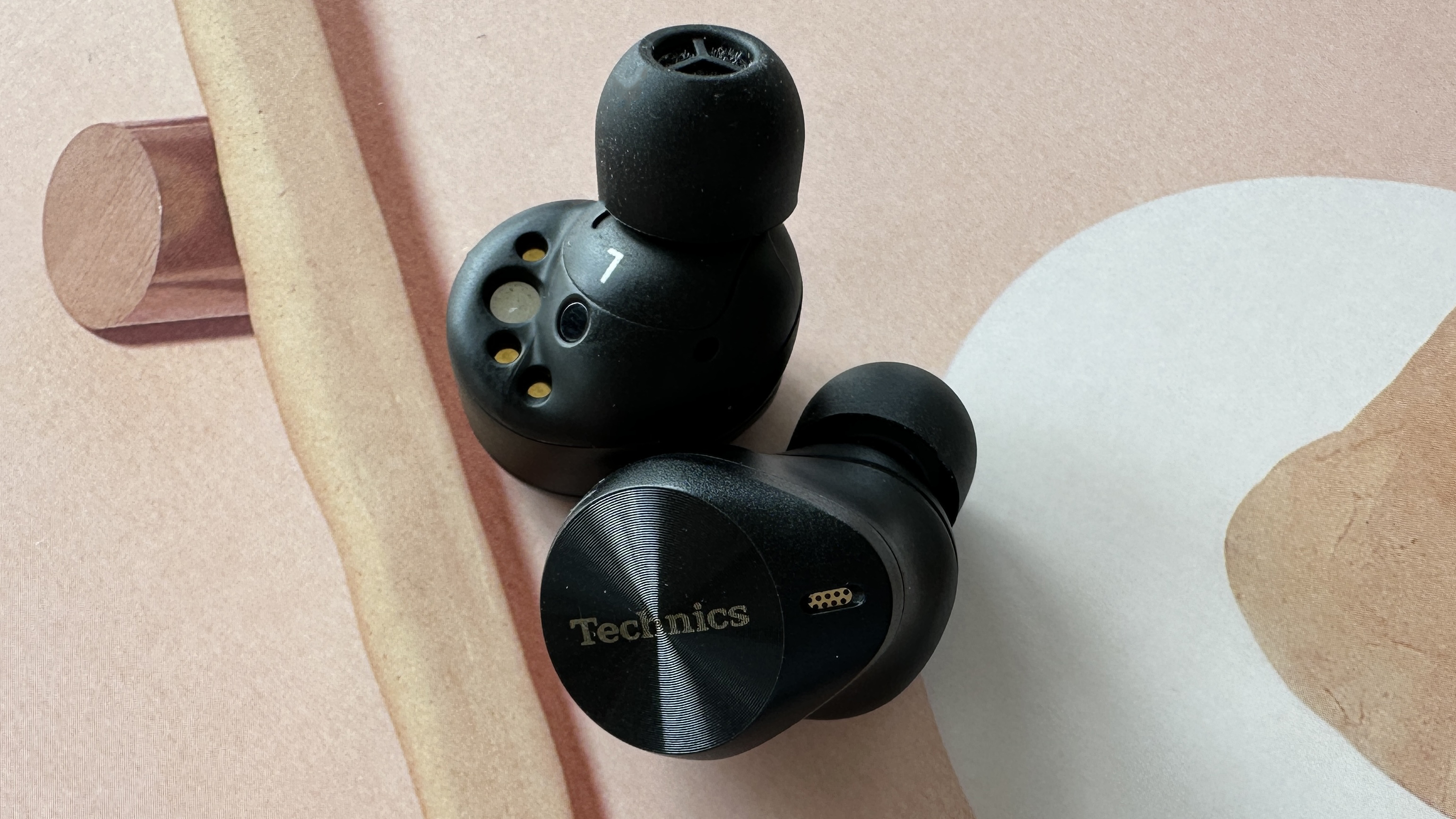
So far, then, it seems safe to say the EAC-AZ80 are just slightly ahead. And when you factor in the extremely comfortable form-factor, which makes longer listening sessions a breeze, they’re starting to look pretty attractive. But it’s audio quality, of course, that will be most people’s priority when it comes to choosing some new true wireless earbuds - and where sound is concerned, the AZ80 have plenty to recommend them.
Tonally, they’re admirably neutral and natural - leave the EQ settings well alone and there’s a pleasingly consistent balance to the entire frequency range, with no area overheated and no area undercooked. From the deep, textured bass response to the crisply attacking treble, via the spacious and informative midrange in between, the AZ80 are a convincingly even-handed listen.
Detail levels are high across the board. Even the most fleeting, most incidental happenings are identified and contextualised - but never at the expense of the overall picture. The Technics have plenty to say about tone and timbre at either end of the frequency range, and the amount of detail (both broad and fine) they can extract from the midrange is impressive too. There’s speed and control at the low end, and plenty of momentum and rhythmic positivity as a consequence. In absolute terms, the top of the frequency range could be a little more substantial, but it wants for nothing where control and expression are concerned.
As well as having a nice facility with the more minor harmonic dynamics of recordings, the AZ80 have no problem dispatching the big dynamic variations on show when, say, a symphony orchestra barrels into the final crescendo. They can create a nice spacious soundstage, too, giving every element of a recording a solidly defined position and enough space to express itself. Despite this, though, the Technics unify recordings well and present them as a coherent and persuasive whole, as a performance, rather than as a collection of individual occurrences.
Those who crave action might find the lack of excitability the AZ80 demonstrate a little underwhelming though. The rest of us will admire the even-handed, considered and, ultimately, realistic nature of their presentation.
Technics EAH-AZ80 review: Design & Usability
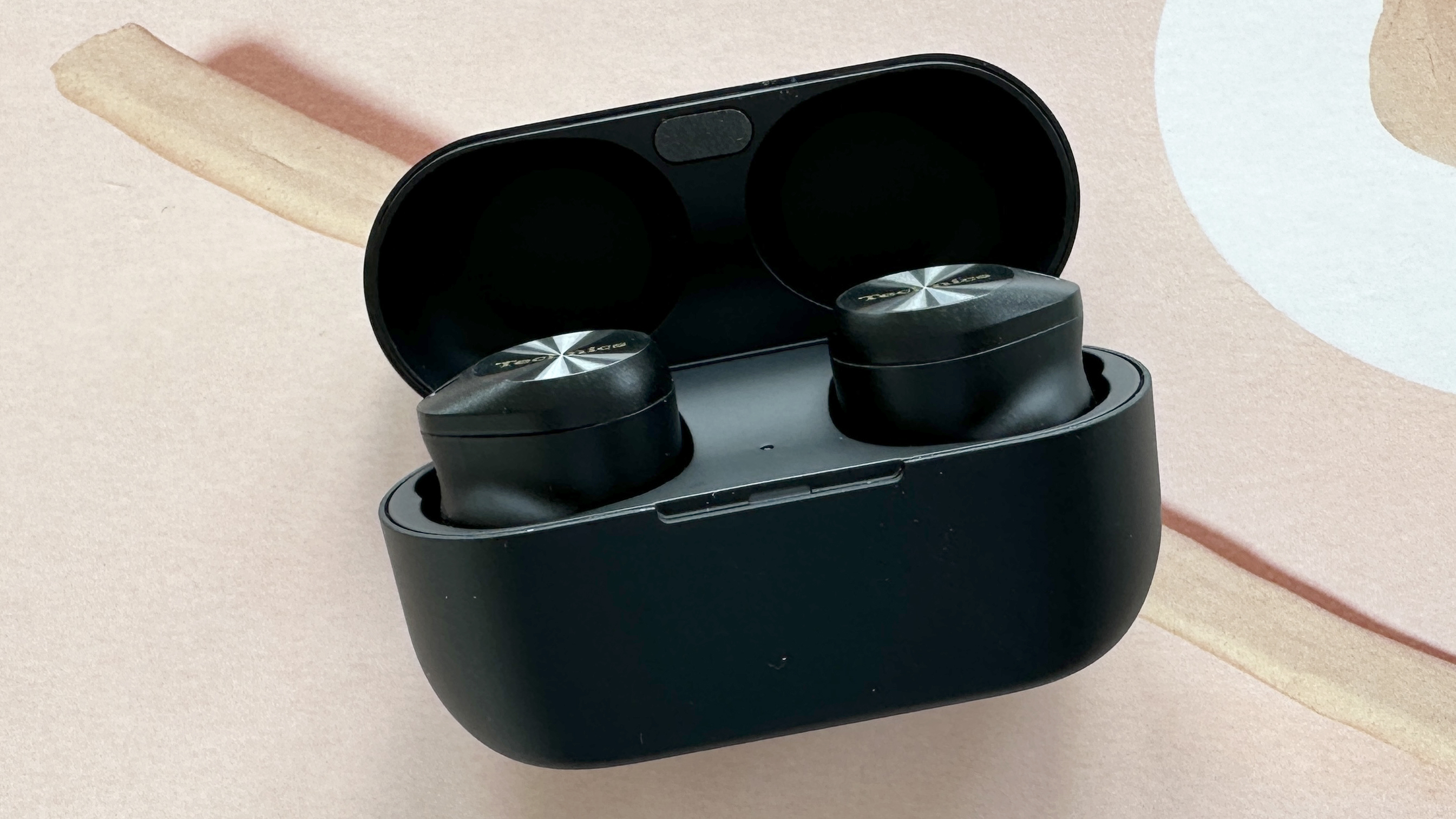
No sensible company gets carried away where the design of true wireless in-ears is concerned, and if Technics is anything then it’s a sensible company. Despite that, though, the company has had a good long think about the design of the EAH-AZ80 - especially where fit and comfort are concerned.
The broad design is understatedly classy, which is just as well when you consider how much Technics is asking. The milled aluminium touch-surface of our black review sample looks and feels good, and the brand logo running across its surface is confident - and it’s the same story where the charging case in which they travel is concerned.
The plastics that make up the bulk of the product are robust, yet both the earbuds and the charging case are (by prevailing standards) compact and reasonably light - the earbuds come in at a touch under 7g each, while the charging case is 50g. That doesn’t mean they’re in any way ordinary in the way they’re constructed, though - build quality is extremely good.
In an effort to keep the AZ80 as comfortable as possible for as long as possible, Technics has moulded an extrusion into the basic ‘drop’-shaped body of each earbud. Called ‘concha-fit’, it’s designed to fit more naturally into the ear and distribute the weight of the earbud more evenly. The company’s also included seven different sizes of silicone earbuds in the AZ80 packaging. The performance of true wireless earbuds is strongly fit-dependent, of course, and Technics is at pains to point out that not everyone has identically sized ears - so it offers as much scope as possible for you to get the ideal fit for each ear.
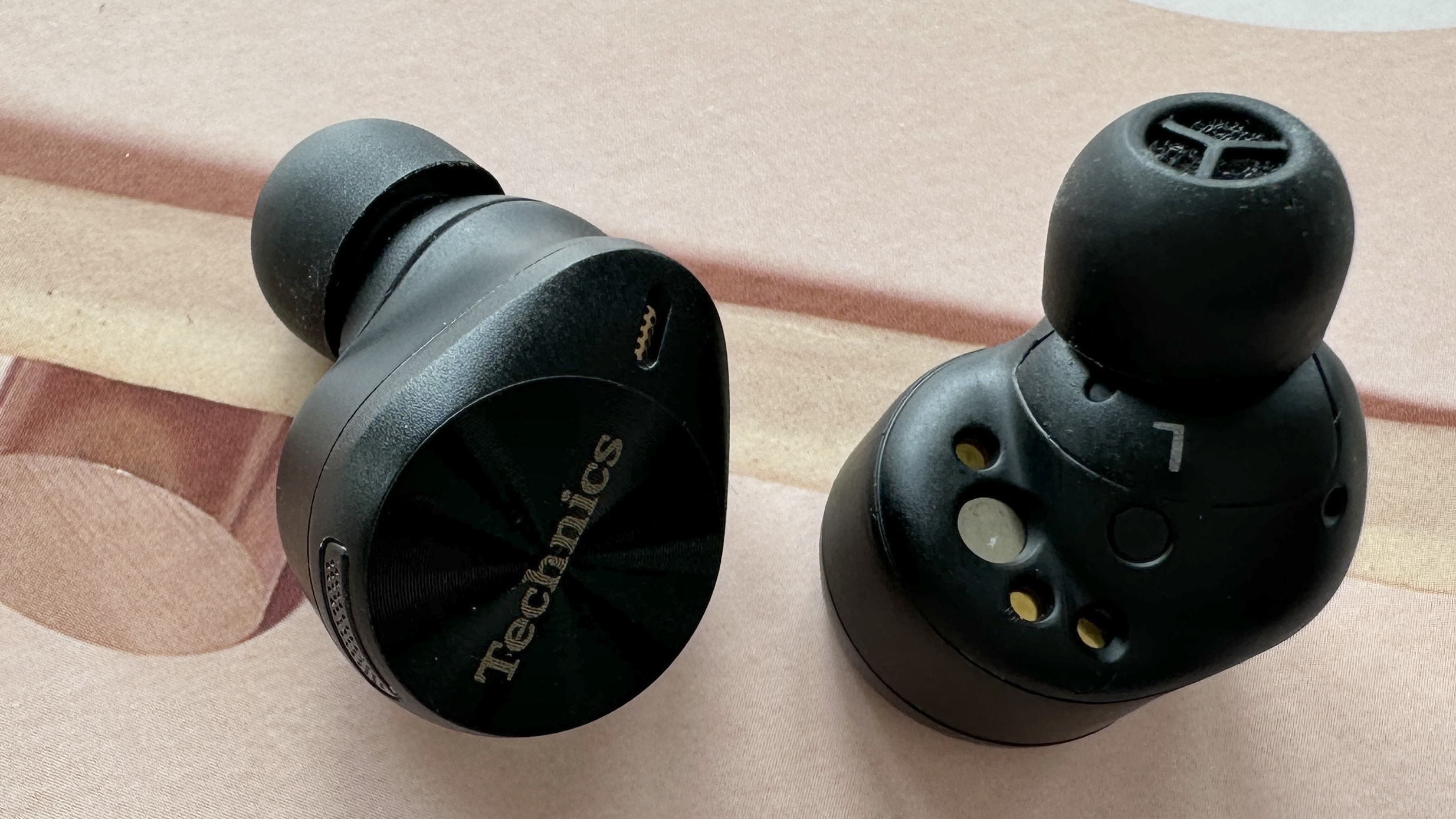
As far as control is concerned, you’ve the usual high-end true wireless earbud options: each earbud includes a large, responsive and reliable capacitive touch surface - here you can control the basics of ‘play/pause’, ‘skip forwards/backwards’, ‘volume up/down’, ‘cycle through noise-cancellation options’ and ‘answer/end/reject call’. The number of taps or holds each function requires can be user-defined.
That customisation takes place in the Technics ‘Audio Connect’ control app, free for iOS and Android. At the time of testing, the app was in ‘beta’ mode, but the fully specified version will be available from the day the AZ80 go on sale. Experience of the beta version, along with previous experience of ‘Audio Connect’ when testing the older EAH-AZ60 and EAH-AZ40 models, means it’s safe to say this app is stable, logical, wide-ranging and ultimately rather bland-looking. There’s a lot of functionality here, but most important is the ability to customise EQ settings and alter the intensity of the ANC (or of the ambient sound if you’re working in that direction).
The EAH-AZ80 are also compatible with your source player’s native voice assistant (as long as it’s not Bixby, but oh well, eh?). Interactions are clean and intelligibility is good, thanks no doubt to the carefully implemented mic array already discussed.
Technics EAH-AZ80 review: Verdict

What do you want from your new true wireless in-ear headphones? If it’s considered, grown-up and thoroughly convincing that you’re after, along with excellent comfort, triple-point connectivity, and some good comms smarts, Technics has just the thing with the EAH-AZ80. Just don’t mention battery life or active noise-cancellation (or, if you must, then just whisper it).
Also consider
If you fancy class-leading ANC and audio quality that’s far from shabby, look (and listen) no further than the Bose QuietComfort Earbuds II. Their powers of noise-cancellation are remarkable, and their sound is robustly informative too. They’re not quite as comfortable over the long haul as the EAH-AZ80, it’s true - but then very few earbuds are. And the fact the Bose have just received an over-the-air firmware upgrade to aptX Low Latency compatibility makes a sweet deal sweeter still.
Simon Lucas is a freelance technology journalist and consultant, with particular emphasis on the audio/video aspects of home entertainment. Before embracing the carefree life of the freelancer, he was editor of What Hi-Fi? magazine and website – since then, he's written for titles such as Wired, Metro, the Guardian and Stuff, among many others. Should he find himself with a spare moment, Simon likes nothing more than publishing and then quickly deleting tweets about the state of the nation (in general), the state of Aston Villa (in particular) and the state of his partner's cat.
